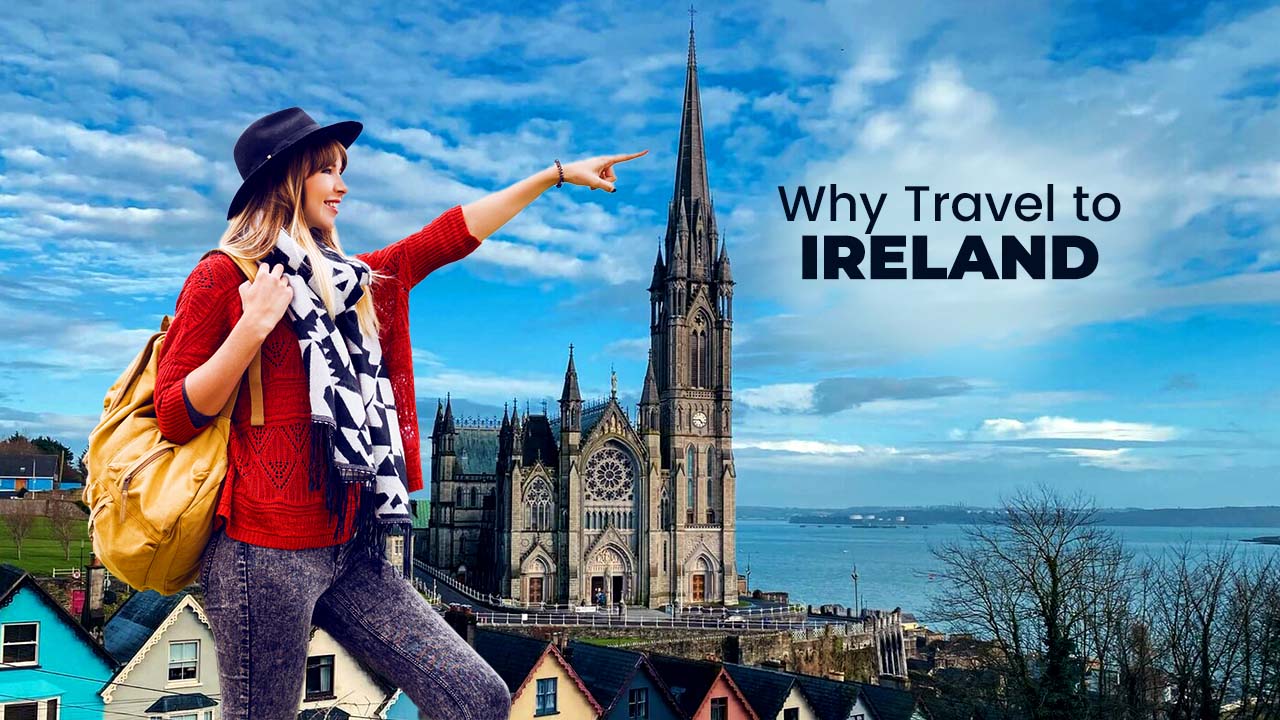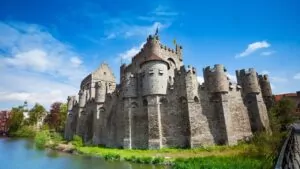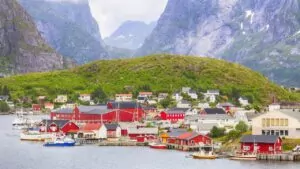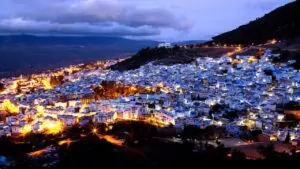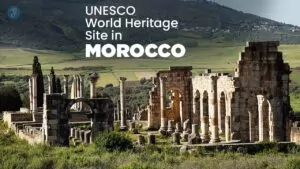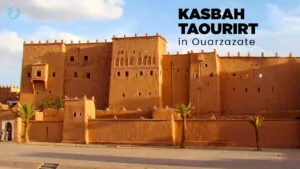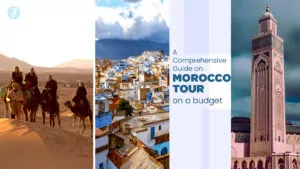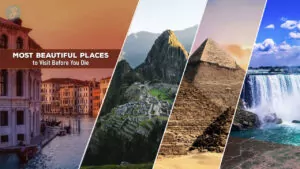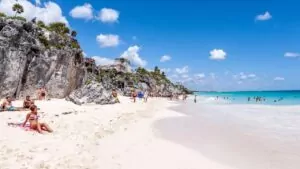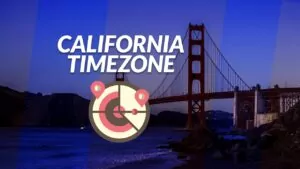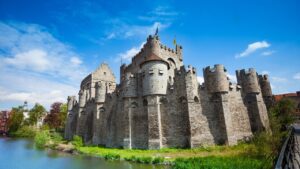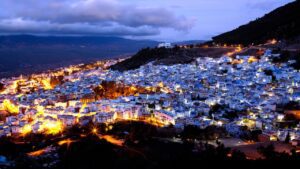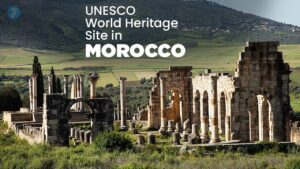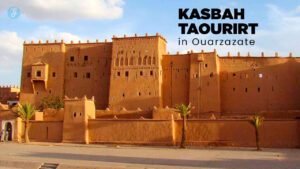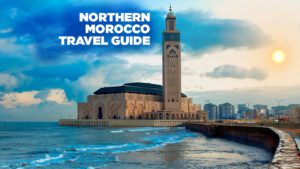Ireland, with its verdant landscapes, rich cultural heritage, and warm hospitality, continues to captivate travelers from around the world. The Emerald Isle offers a unique blend of breathtaking natural beauty, fascinating history, and vibrant traditions that make it an unforgettable destination. Whether you’re tracing ancestral roots, seeking adventure along rugged coastlines, or simply wanting to experience the famous Irish welcome, there are countless reasons why travel to Ireland should be on your bucket list.
Why Travel to Ireland? A Journey Through the Emerald Isle
Ireland is a magical and mysterious place to visit that will leave something unexplainable with you. From its vast coastline to its ancient ruins and lively pub culture, Ireland offers experiences that touch the soul and create lasting memories. As Oscar Wilde described Connemara, there’s a “lunar quality, the remoteness, the wildness, the loneliness” to Ireland’s landscapes that captivates visitors.
1. Breathtaking Natural Landscapes
The nickname “Emerald Isle” perfectly captures Ireland’s lush, verdant countryside that shimmers in various shades of green. When flying into Dublin, the breathtaking greenery is immediately apparent, with endless expanses of different shades visible while driving through the country’s scenic roads. Many travelers who research why travel to Ireland are drawn primarily to these natural wonders.
Iconic Coastal Wonders
The Cliffs of Moher stand as one of Ireland’s most visited natural attractions, stretching for 5 miles and reaching 702 feet at their highest point. These majestic cliffs have been featured in numerous films, including Harry Potter and Leap Year. The cliff walk trail from the village of Doolin to the Cliffs comes highly recommended, offering magnificent panoramic views over the Atlantic Ocean.
Diverse Landscapes
Beyond the famous cliffs, Ireland boasts an impressive variety of landscapes:
- The Burren National Park: A unique karstic limestone landscape forming a UNESCO Global Geopark alongside the Cliffs of Moher
- The Ring of Kerry: A scenic driving route showcasing Ireland’s wild side with mountains, lakes, and coastal views
- Connemara: Known for its rugged mountains, crystal-clear lakes, and golden beaches
- The Giant’s Causeway: Located in Northern Ireland, this UNESCO World Heritage site features approximately 40,000 interlocking basalt columns
The country’s natural diversity allows visitors to experience mountains, lakes, islands, and dramatic coastlines all within relatively short distances. For outdoor enthusiasts, Ireland offers countless hiking trails, cycling routes, and water activities to fully immerse in its natural splendor.
2. Rich Cultural Heritage
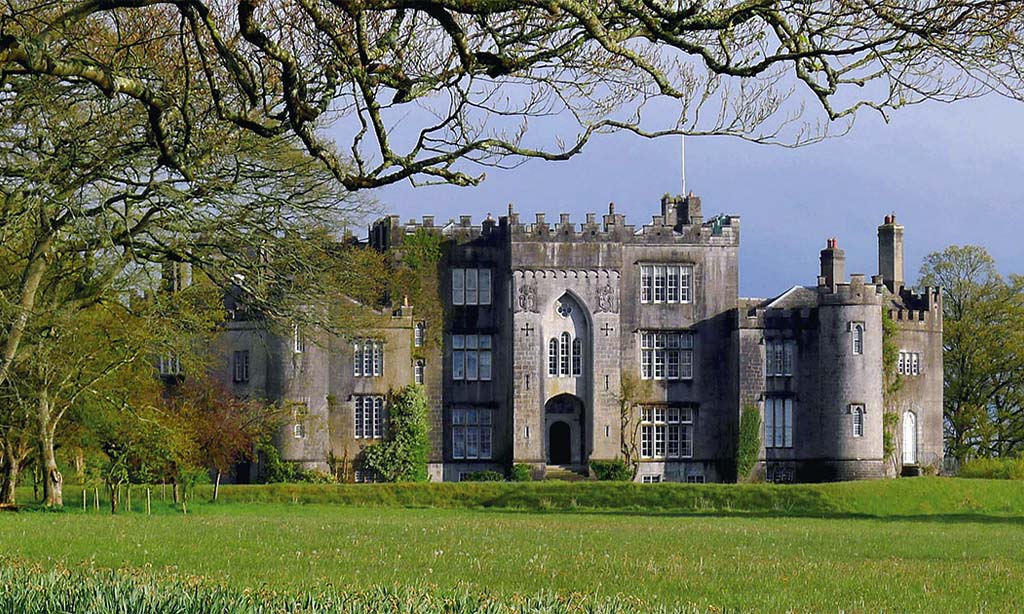
When examining why travel to Ireland, the country’s cultural tapestry woven with ancient myths, literary greatness, and historical significance cannot be overlooked:
Literary Legacy
Ireland has produced some of the world’s most celebrated writers and poets, including James Joyce, W.B. Yeats, Oscar Wilde, and Samuel Beckett. Literary enthusiasts can explore this heritage through events like the Bloomsday Celebrations, which commemorate Joyce’s masterpiece “Ulysses”. Dublin, recognized as a UNESCO City of Literature, offers numerous literary tours and museums dedicated to the country’s literary giants.
Traditional Music and Dance
Irish traditional music remains vibrant throughout the country, particularly in Galway, known for its lively pub sessions. The sound of fiddles, tin whistles, bodhráns (Irish drums), and uilleann pipes creates the distinctive soundtrack of Ireland. Visitors can experience authentic ceilis (traditional Irish social gatherings with music and dancing), feiles (festivals), and fleadhs (music competitions) throughout the year.
Ancient History and Mythology
Ireland’s landscape is dotted with ancient monuments, stone circles, and ruins that speak to its prehistoric past. The country’s rich mythology, featuring tales of Cú Chulainn, Finn MacCool, and the Tuatha Dé Danann, adds a mystical dimension to many of its historical sites. This blend of tangible history and captivating folklore creates a unique cultural experience for travelers.
3. Why Travel to Ireland: The Legendary Irish Welcome
The legendary Irish welcome is not just a marketing slogan but a genuine cultural characteristic that visitors consistently experience throughout their stay.
The Irish Spirit
The Irish people have an indomitable spirit and zest for life that is infectious. Whether celebrating St. Patrick’s Day with parades and festivities or joining a lively music session in a pub, visitors quickly feel the energy and enthusiasm that permeates Irish culture. This warmth extends to everyday interactions, from conversations with shopkeepers to chats with locals in pubs.
Vibrant Pub Culture
Irish pubs serve as social hubs where visitors can experience authentic local culture. More than just places to drink, they’re community gathering spots where stories are shared, music is played, and friendships are formed. The pub experience offers insight into the Irish way of life and provides opportunities for meaningful cultural exchange.
Dublin has twice been voted the friendliest city in Europe by TripAdvisor, reflecting the genuine hospitality that visitors can expect throughout the country.
4. Tracing Irish Roots and Ancestry
For many Americans and others worldwide, visiting Ireland represents a journey to uncover family roots. With approximately 80 million people globally claiming Irish ancestry, genealogical tourism has become a significant draw.
Genealogical Resources
Ireland offers extensive resources for those researching their family history:
- The National Library of Ireland in Dublin
- The National Archives of Ireland
- EPIC The Irish Emigration Museum in Dublin, named “Europe’s Leading Tourist Attraction 2019”
- Local heritage centers throughout the country
- County libraries with specialized genealogy sections
Cultural Connection
Beyond formal research, many visitors find that simply experiencing the landscapes, villages, and traditions of their ancestors creates a profound sense of connection. Walking the same streets, viewing the same mountains, or visiting the parish church where family members were baptized can provide a deeply moving experience.
Galway, known as the “City of Tribes,” serves as a particularly important hub for heritage exploration, offering genealogy resources, cultural landmarks, and traditional Irish music—all providing meaningful ways to connect with Irish heritage.
5. Vibrant Cities and Charming Villages
Ireland offers a perfect balance of bustling urban centers and picturesque rural communities, each with its own distinct character.
Dublin: A Capital of Culture
As Ireland’s capital, Dublin blends historical significance with contemporary energy. Visitors can explore attractions like Trinity College (home to the Book of Kells), the Guinness Storehouse, and Dublin Castle, while also enjoying the city’s thriving food scene, literary heritage, and nightlife. Dublin has been recognized as a UNESCO City of Literature and was twice voted the friendliest city in Europe by TripAdvisor.
Belfast: A City Transformed
Belfast, the capital of Northern Ireland, has undergone a remarkable transformation in recent decades. The city now offers innovative gastronomy, traditional pubs, and the fascinating Titanic Belfast museum, which tells the story of the famous ship built in the city’s shipyards.
Charming Towns and Villages
Beyond the major cities, Ireland’s smaller communities offer authentic experiences:
- Galway: Known for its vibrant arts scene, medieval streets, and traditional music
- Kilkenny: A medieval town with a magnificent castle and craft traditions
- Kinsale: A colorful coastal town renowned for its food scene
- Dingle: A charming peninsula town with strong Gaelic traditions
These smaller communities often provide the most authentic glimpses into Irish life and culture, with their traditional architecture, local festivals, and slower pace of life.
6. Castles, Historic Sites, and Ancient Monuments
Ireland’s landscape is dotted with historical structures spanning thousands of years, from prehistoric monuments to medieval castles and grand estates.
When considering why travel to Ireland, history buffs will find themselves in paradise:
Magnificent Castles
Ireland’s castles range from well-preserved medieval fortresses to romantic ruins:
- Blarney Castle: Home to the famous Blarney Stone
- Dublin Castle: At the heart of Ireland’s capital
- Kilkenny Castle: A stunning example of Norman architecture
- Bunratty Castle: Offering medieval banquets and folk park experiences
Ancient Monuments
Ireland’s ancient monuments predate written history:
- Newgrange: A 5,200-year-old passage tomb older than the Egyptian pyramids
- The Hill of Tara: Ancient seat of the High Kings of Ireland
- Poulnabrone Dolmen: A Neolithic portal tomb in the Burren
These sites provide tangible connections to Ireland’s distant past and offer insights into prehistoric engineering and spiritual practices.
7. Culinary Delights and Craft Beverages
Irish cuisine has undergone a renaissance in recent years, moving far beyond the stereotype of potatoes and stew to embrace farm-to-table dining, artisanal production, and innovative cooking.
The question of why travel to Ireland finds delicious answers in the country’s evolving food scene:
Fresh Local Seafood
Ireland’s position as an island nation means seafood features prominently in its cuisine. The Wild Atlantic Way coastal route offers numerous opportunities to sample fresh catches from the Atlantic, from Galway Bay oysters to Dublin Bay prawns and Atlantic salmon.
Farm-to-Table Dining
Ireland’s agricultural heritage translates to exceptional dairy products, grass-fed beef, and lamb. The country’s commitment to sustainable, local food production has resulted in a thriving food scene that celebrates these quality ingredients.
Craft Beverages
No discussion of Irish consumables would be complete without mentioning its famous beverages:
- Guinness: The iconic stout that truly does taste better in Ireland
- Irish Whiskey: With distilleries throughout the country offering tours and tastings
- Craft Beer: A booming scene with microbreweries creating innovative brews
- Irish Coffee: The perfect warming drink after a day exploring in the Irish weather
Food festivals throughout the country, such as A Taste of West Cork, showcase the best of Irish cuisine and provide opportunities to meet producers and sample local specialties.
8. Outdoor Adventures and Activities
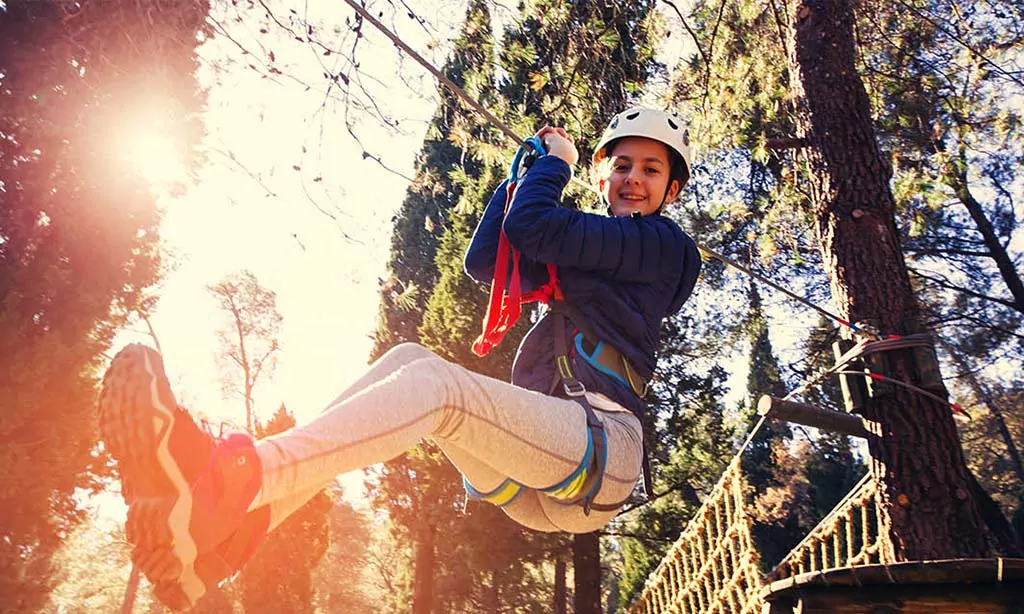
Ireland’s varied landscape provides the perfect backdrop for a wide range of outdoor activities, from gentle walks to adrenaline-pumping adventures.
The question of why travel to Ireland is often answered by outdoor enthusiasts who find paradise in:
Hiking and Walking
Ireland offers walking opportunities for all abilities:
- The Wild Atlantic Way: Featuring numerous coastal paths with breathtaking views
- Wicklow Mountains: Known as “the Garden of Ireland” with scenic trails
- The Burren: Offering unique limestone landscapes to explore
- Great Western Greenway: A 42km off-road cycling and walking trail in County Mayo
Water Activities
Surrounded by water, Ireland naturally offers numerous aquatic adventures:
- Surfing on the west coast, particularly in County Sligo
- Sailing around the numerous islands and inlets
- Kayaking on lakes and rivers
- Sea fishing along the coast
Golf
Ireland is home to over 400 golf courses, including world-famous links courses like Royal Portrush, Ballybunion, and Lahinch. The country’s varied terrain creates challenging and scenic golfing experiences for players of all levels.
9. Festivals and Events Year-Round
Ireland maintains a busy calendar of festivals and events throughout the year, celebrating everything from music and literature to food and traditional culture.
Traditional Festivals
Ireland’s calendar includes numerous traditional celebrations:
- St. Patrick’s Festival: The world-famous celebration in March
- Puck Fair: One of Ireland’s oldest festivals, held in Kerry each August
- Fleadh Cheoil na hÉireann: Ireland’s largest traditional music festival
Arts and Culture
Throughout the year, Ireland hosts events celebrating various art forms:
- Dublin Theatre Festival
- Galway International Arts Festival
- Bloomsday Celebrations honoring James Joyce
- Cork International Film Festival
Seasonal Celebrations
Each season brings its own special events, from summer music festivals to Christmas markets in cities and towns across the country. The New Year’s Festival in Dublin offers one of Ireland’s largest celebrations to welcome the new year.
10. Accessibility and Ease of Travel
Ireland’s compact size makes it an ideal destination for travelers who want to experience a variety of landscapes and attractions without excessive transit time. When researching why travel to Ireland, many appreciate the practical benefits:
Efficient Transportation
Ireland offers various transportation options:
- Extensive bus and train networks connecting major cities and towns
- Well-maintained roads for self-driving tours
- Domestic flights for longer journeys
- Cycling routes throughout the country
Language Accessibility
While Irish (Gaelic) is the first official language, English is spoken throughout the country, making it accessible for English-speaking travelers. This eliminates language barriers while still allowing visitors to experience the unique cultural aspects of the Irish language in certain regions.
Safety
Ireland is generally considered a safe destination for travelers. As with any destination, normal precautions should be taken, particularly in urban areas where petty crime like pickpocketing can occur.
Planning Your Irish Adventure
When planning a trip to Ireland, consider these practical tips to enhance your experience.
Best Time to Visit
Ireland’s climate is moderate year-round, but each season offers different advantages:
- Spring (March-May): Fewer crowds, blooming landscapes, and moderate temperatures
- Summer (June-August): Longest daylight hours, warmest temperatures, and most festivals
- Autumn (September-November): Beautiful fall colors and harvest festivals
- Winter (December-February): Christmas markets, New Year celebrations, and cozy pub experiences
Regional Experiences
Consider focusing on specific regions to minimize travel time and maximize experiences:
- Dublin and the East: For urban experiences, history, and culture
- The Wild Atlantic Way: For dramatic coastal scenery and traditional Irish culture
- Northern Ireland: For the Giant’s Causeway, Belfast, and Game of Thrones filming locations
- Ireland’s Ancient East: For historical sites and heritage experiences
- Ireland’s Hidden Heartlands: For a more off-the-beaten-path experience with lakes, rivers, and rural charm
Practical Considerations
When planning your trip:
- Consider renting a car for flexibility, especially when exploring rural areas
- Book accommodations in advance, particularly during summer and for popular festivals
- Pack for variable weather conditions, including rain gear regardless of season
- Research special events that might coincide with your visit
Takeaways
The question of why travel to Ireland finds its answer in the country’s unique combination of natural beauty, rich cultural heritage, warm hospitality, and diverse experiences. From tracing ancestral roots to exploring ancient castles, from hiking dramatic coastal cliffs to enjoying traditional music in cozy pubs, Ireland offers experiences that appeal to travelers of all interests and ages.
The recent growth in tourism, with 6.2 million overseas visitors from January to November 2024, reflects Ireland’s enduring appeal as a destination. The country’s ability to combine traditional charm with modern amenities creates a travel experience that feels both authentic and comfortable.

